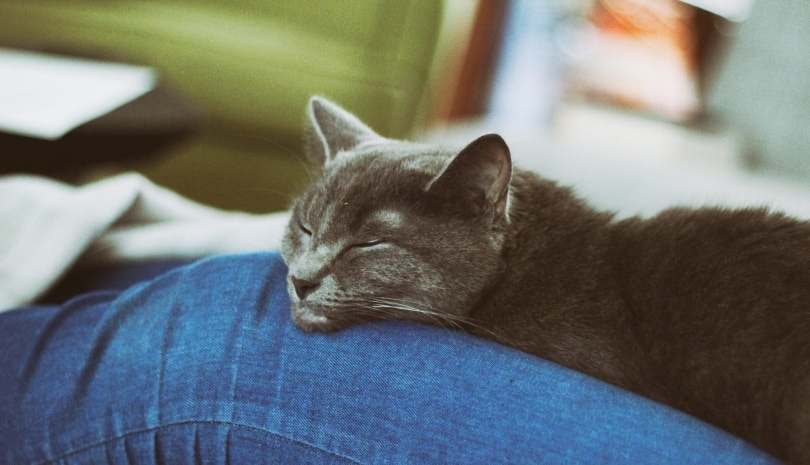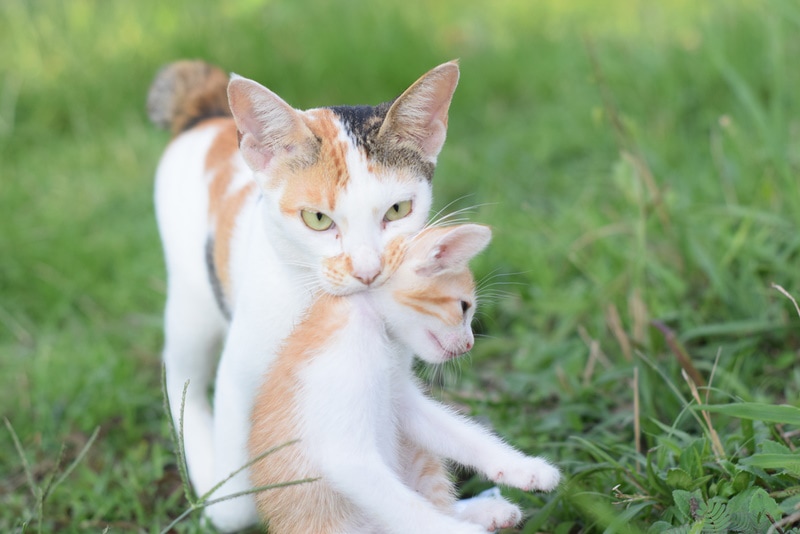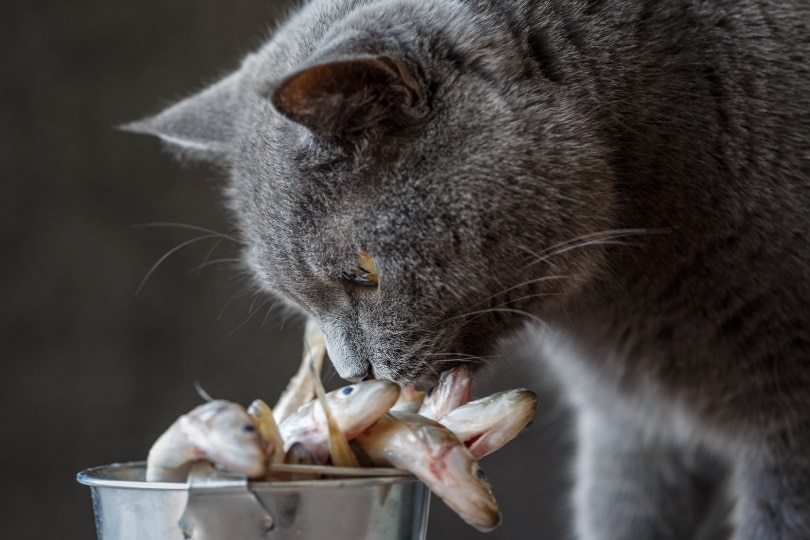Why Does My Cat Sound Like a Pigeon? 3 Vet-Reviewed Reasons
By Ashley Bates
Updated on
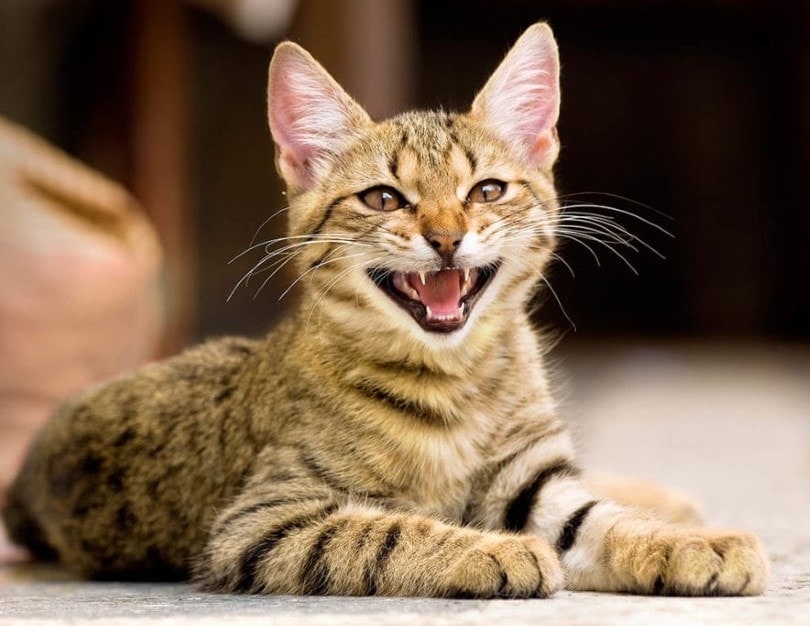
Click to Skip Ahead
We all know that our cats make a fair share of strange and otherworldly noises. Sometimes their noises can surprise us, being very different from a meow or hiss. There are up to 21 different cat vocalizations described in literature. If you’ve ever heard a sound similar to a pigeon cooing, it actually has a name and a meaning. It’s usually referred to as trilling, although there may be some other variants of it as well, and in this article, we’re going to go over what trilling is, why your cat does it, and a few more details!
Trilling: What Is it?
Trilling is one of a cat’s many methods of communication. It has its own set of meanings, depending greatly on the overall mood of the situation. Trilling is used to chat with other familiar cats and humans, and it generally marks a friendly sound or an invitation to play.
Trilling includes high-pitched, repetitive, short and soft bursts of sound. It is a very distinct sound that can be described as an R “rolling”, such as in languages like Spanish, or as some people call it, “cooing like a pigeon”. It is distinct from other sounds a cat usually makes.
You can hear what it sounds like by clicking here. Cats will easily go from making one sound to the other, combining them continuously. The trill and purr, both classed as the murmur sounds, are produced with a closed mouth. So, that’s cute and all, but what does it mean?
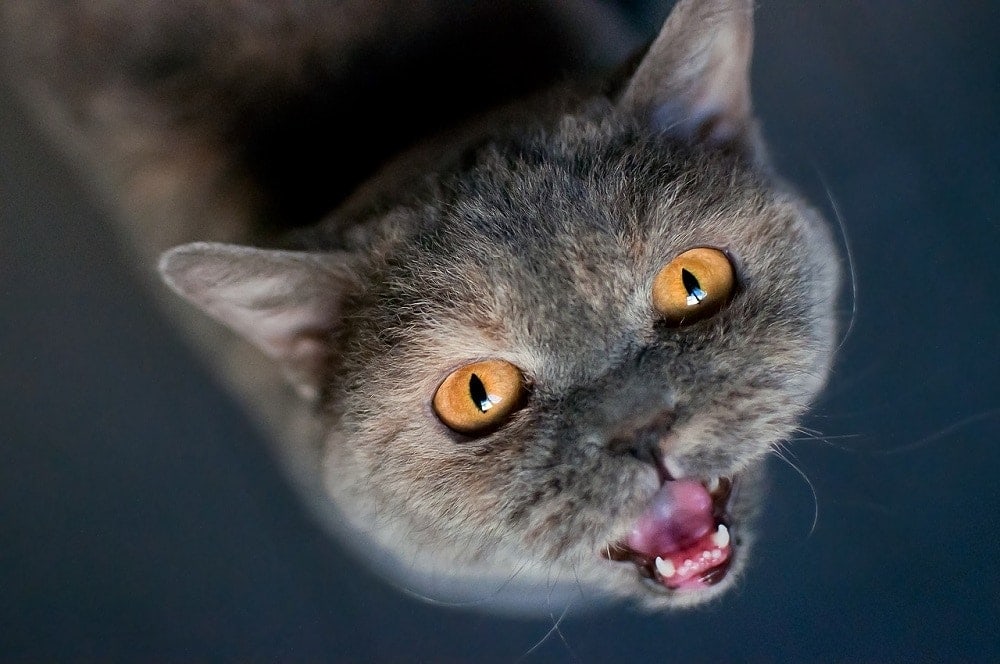
Why Do Cats Coo Like a Pigeon (Trill)?
1. Your Cat Wants Attention
To put it plainly and simply, your cat wants attention. They might come up to you and trill for a way to say, “Hello, I’m here.” Conversely, you might also hear this vocalization if you start giving your cat attention unexpectedly. It is a pleasing surprise in the event of first contact, like a greeting or recognition, or it may be in response to treats and cuddles.
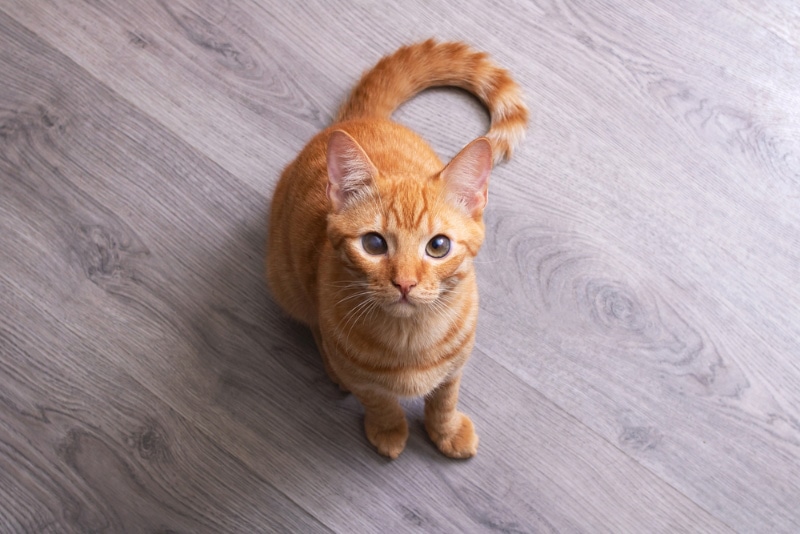
2. Your Cat Is Chatting With You
Your cat is probably just looking for a way to communicate with you. Trilling is a way of showing curiosity or attentiveness. They might come up to you and try to questionably ask you what exactly you’re up to. Trilling seems to happen in a very positive or inquisitive fashion.
You can engage in conversation with them, and you can certainly expect reciprocation. Trilling can be followed up by meowing, purring, and other pleased vocalizations. They might even use their trill to lead you to the empty food bowl you forgot to fill. How polite.
3. Mom Cats Are Getting the Kitten’s Attention
You might also hear mother cats trill at their kittens. This is a way of grabbing the kittens’ attention and communicating things with them. It is very commonly seen in mother-to-kitten interactions. You can observe that in your daily life if you have a litter in your home.
Cat Sounds: What Are They and What Do They Mean?
Cats make plenty more sounds than just a trill. They have many different vocalizations, but before we dig into all that, let us blow your mind!
Did you know that feral cats don’t meow that often? It’s true. They might meow every once in a while, but they generally don’t use this vocalization as frequently because meowing in cats is mainly a way to interact with humans. Feral cats don’t often have the need to make these interacting vocalizations unless there are people feeding them with whom they may interact. This is a behavior brought on by domestication and socialization.
- Meow: The meow is the familiar sound we all know and love. It is among some of the first onomatopoeias we learn as children.
- Purr: When a cat is really feeling good, most purr. Not only is this a sign of happiness, but the frequency of a cat’s purr may also have the capability of healing, based on some research. Still, cats can also purr if they are in pain or ill as a way to reassure and soothe themselves.
- Chattering: Chattering is the noise your cat makes while it looks eagerly at a bird or squirrel out the window. They are agitated and focused on the prey at hand, so much that they make this ungodly noise.
- Growling: Growling is pretty self-explanatory; it’s a low roar of displeasure or fear if feeling threatened.
- Hissing: Hissing means you or someone else better back off—these kitties are scared or mad, and you don’t want to stick around to find out which one it is.
What Other Sounds May Resemble a Pigeon’s Cooing?
There are two other sounds that also may resemble a pigeon’s cooing. One of them is not that well researched and is called the gurgle. It’s a short, low sound that expresses friendly intentions when approaching another cat. It sounds similar to the staccato element in the cooing of pigeons.
The second sound is chirping. They’re high-pitched sounds that may be used as a way to mimic bird or rodent chirp, or as part of the kitten-mother interactions.
So, if you’re thinking about the sounds that your cat is making and they sound like a pigeon, it could be more than just a trill sound they’re producing.
Conclusion
Now you understand the trill and some other sounds that cats may produce that sound like a bird. Maybe your cat isn’t mimicking a pigeon, but it certainly sounds similar. There are many reasons why cats trill, and they are usually associated with friendly and positive emotions. We hope we’ve taught you something new about your cat and their ever-peculiar behaviors.
Featured Image Credit: Stanimir G.Stoev, Shutterstock


